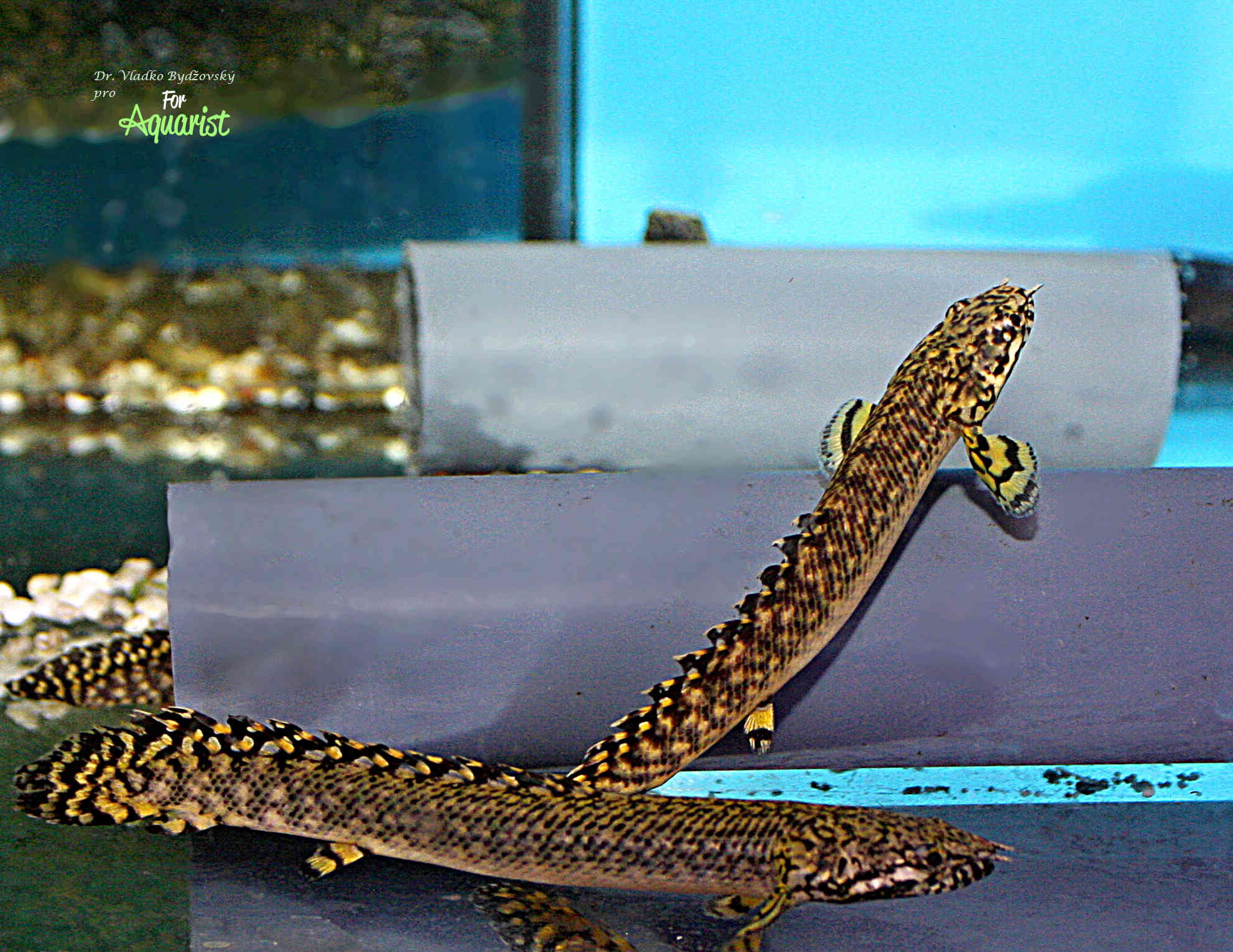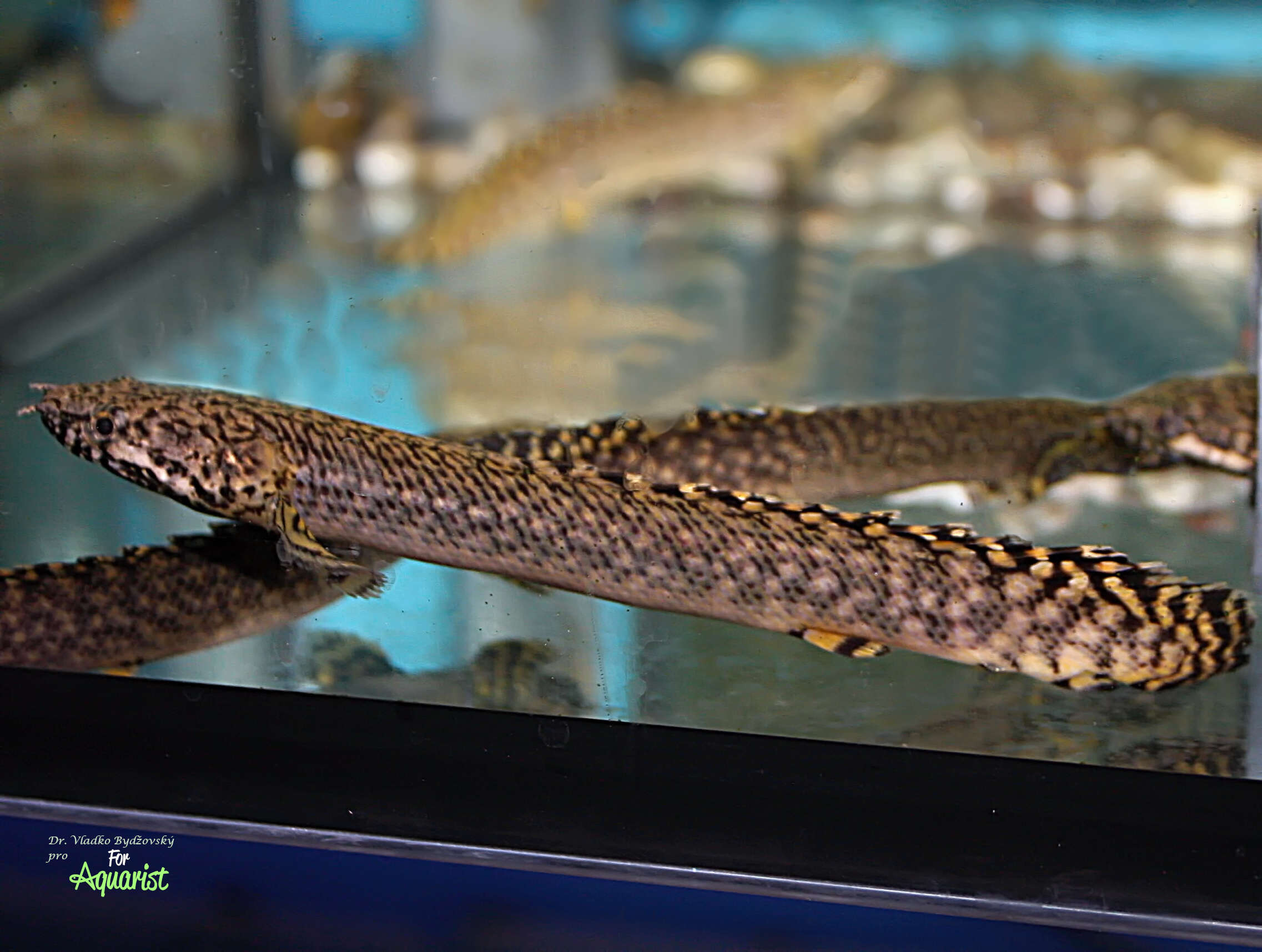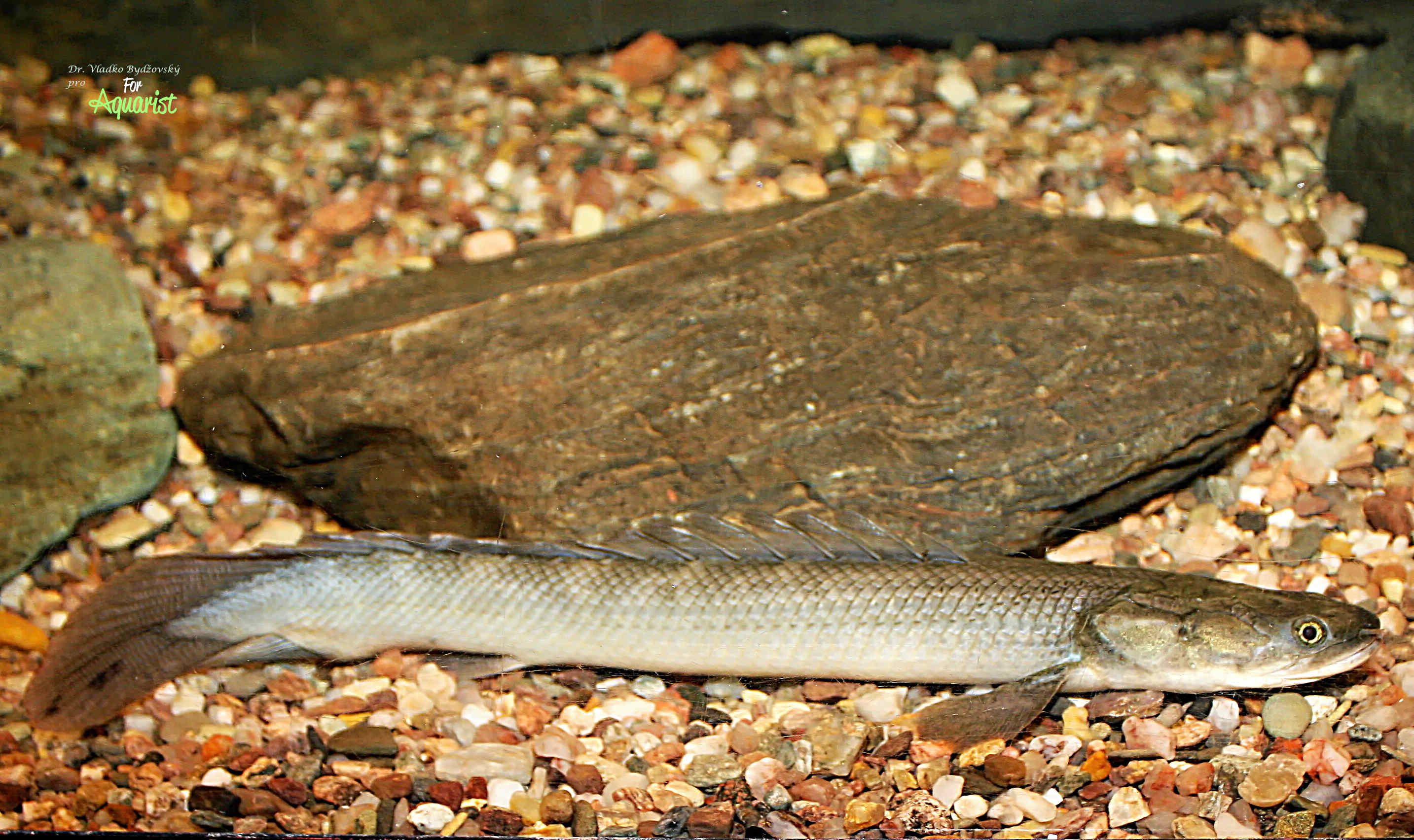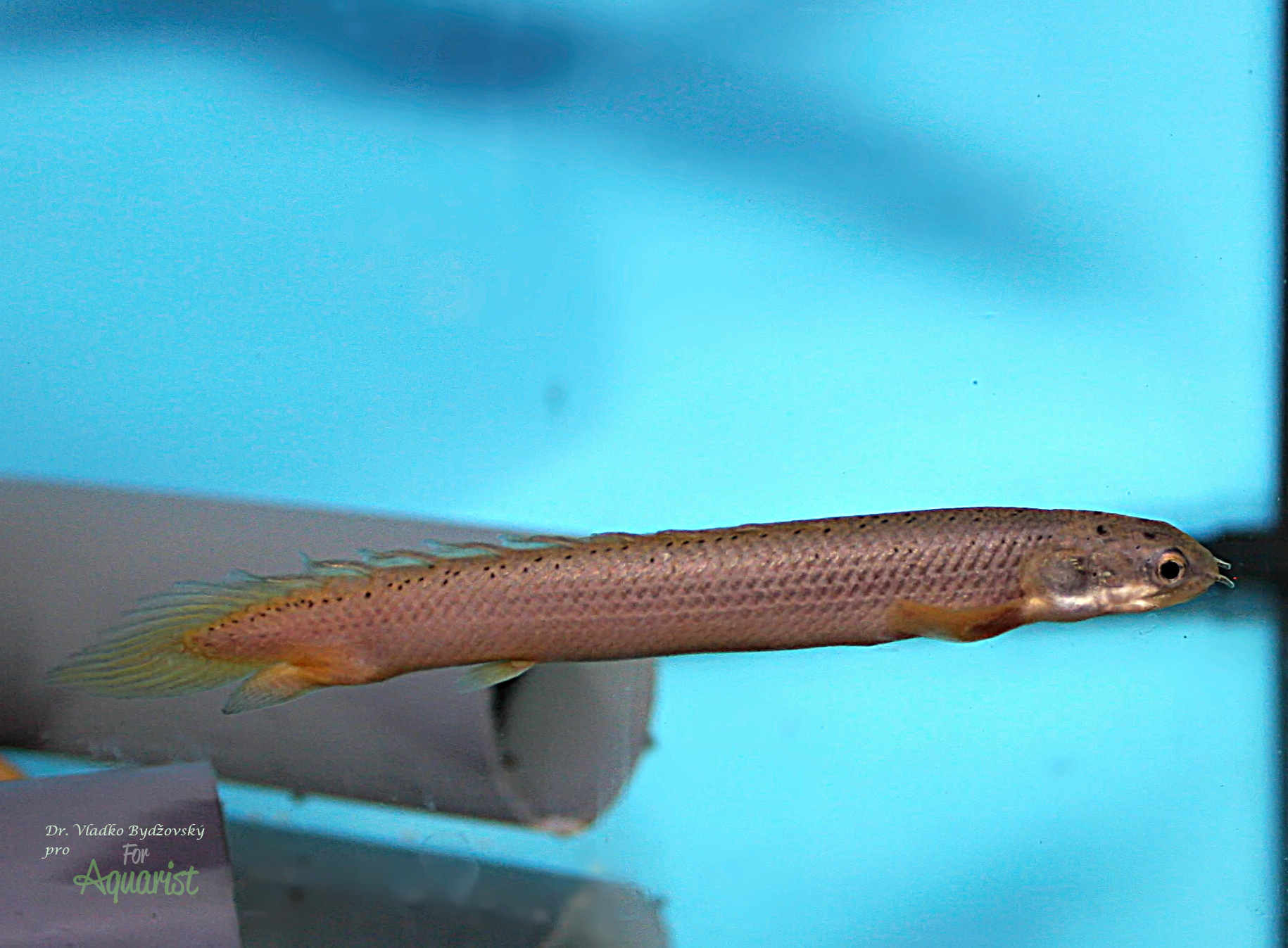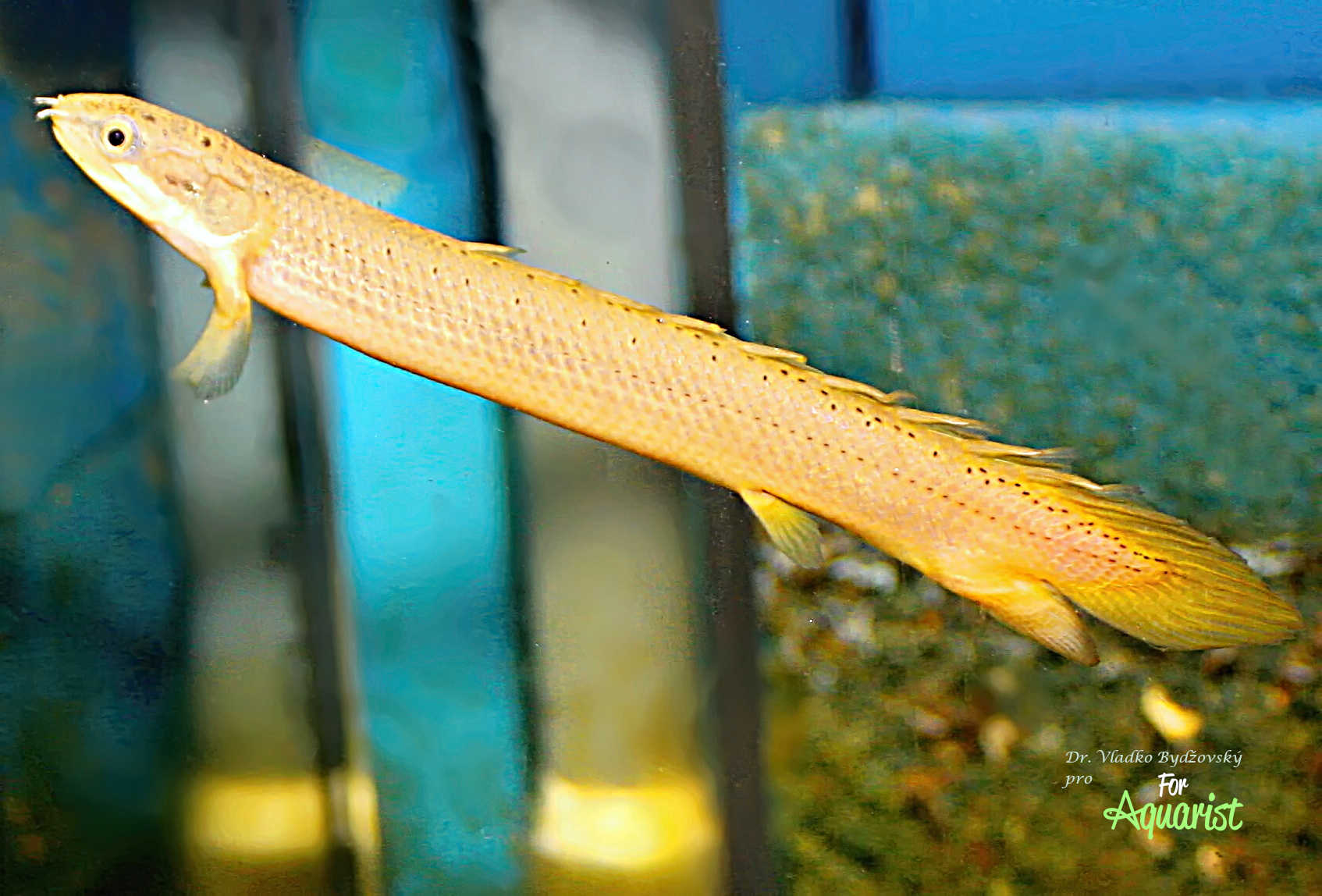Bichirs are exceptional aquarium inhabitants – their origins date back to the Eocene, their shape resembles ancient predators, and they rightfully earned the nickname "living fossils." Although they inhabit African rivers in the wild, they only rarely make their way into aquaristics. What species exist, what makes them interesting, and what do they require for care?
Representatives of the order Bichiriformes (Polypteriformes) are a great rarity in our aquariums and aquarium shops. Although their predecessors have been known since the Eocene from deposits in Egypt, many of them to this day, originally up to 180 cm long colossi, did not survive.
They are also referred to as living fossils. They are mostly referred to asPolypterus sp., there are few places where we find the correct species designation. They are creatures ideal for exhibition aquariums.
Family Bichiridae (Polypteridae) includes two genders:
Erpetoichthys
The first is gender Erpetoichthys SMITH, 1865, to which only one species belongs - Erpetoichthys calabaricus SMITH, 1865. Lives in the delta of the Niger and in the coastal waters from Nigeria to Gabon. Bichirs are elongated African fish with many dorsal finlets. They have a particularly well-developed sense of smell.
Polypterus
We will be interested in the second gender Polypterus LACÈPÈDE, 1803, which includes about 9 species with many subspecies. The type species is Polypterusbichir GEOFFROY SAINT-HILAIRE,1802. In contrast to the previous species, this one has developed abdominal fins. They originate from a vast area in Africa south of the Sahara. They live in rivers mostly flowing into the Indian Ocean, further south, and the highest number of these fish lives in the Congo basin. According to characteristic features, which are of more interest to ichthyologists, this genus is divided into 3 groups.
- Group 1: Polypterus ansorgii, Polypterus bichir, Polypterus endlicheri. These fish have 12 or more fins.
- Group 2: Polypterus delhezi, Polypterus ornatipinnis, Polypterus weeksiThey have 10-11 fins, are medium-sized, grow up to 40 cm, and originate from the Congo basin.
- Group 3: Polypterus palmas, Polypterus retropinnis, Polypterus senegalus. In these types, the upper jaw is distinctly longer than the lower.
Aquarium breeding
Breeding is trouble-free. Due to their size, they require appropriately sized aquariums as well as pipes for hiding. However, we must properly cover the aquariums and properly weigh down the cover glasses, otherwise there is a risk that these giants will easily get out of the aquarium.
The chemistry of water is not of fundamental importance. For feeding, we use everything that is edible, from dog pellets to stinking loach, mussels, but also mealworms, bloodworms, pellets for pond fish, various types of food in tablet form, and so on. Various shrimp or crab meat are ideal. Some even feed with beef heart. Here, there is an incredible amount of space for the aquarist's imagination.
Significant species
- Probably the most famous among aquarists is Polypterus ornatipinnis BOULENGER, 1902. In English, it is referred to as the striped bichir, reaching a size of up to 50 cm. It originates from the upper and middle Congo.
- We maintain the water temperature around 23-25°C. Repeatedly, swabs have been observed in an aquarium measuring 150x50x50 cm. They always occurred after repeated water changes to cooler and softer water. The pair placed in this aquarium swims next to each other with open mouths. The fish dart quickly around the aquarium, jumping above the surface. Spawning takes place in pits in the sand, when the male first grabs the female by the head with his mouth, presses against the female with his anal fin, into which the female lays eggs that the male fertilizes. They lay the eggs in piles in the sand. Only some of the eggs stick to the leaves of the plants. About 250-300 eggs hatch in about 4 days. The young develop external gills, so they strongly resemble tadpoles. After about 9-10 days, we start feeding, preferably with brine shrimp nauplii. The young are very intolerant and strongly prone to cannibalism.
- Polypterus palmas AYERS, 1850 originates from Sierra Leone and Guinea. Several subspecies are known, which generally grow up to 30 cm, and are among the most commonly represented bichirs in pet stores.
- Polypterus senegalus CUVIER, 1829, Senegal bichir. It inhabits a large area from Senegal through Gambia and Niger to the White Nile and Lake Chad. It grows up to 40 cm and is also quite often offered in aquarium shops. They are very intolerant of each other, but with other fish, such as the pearl gouramis of the genus and Hemichromis, get along quite well. This species has also been successfully bred in aquariums multiple times. It is interesting that such large fish have eggs that are less than 1 mm in size.
Images:
- Young individuals about 15 cm tall Polypterus ornatipinnis.
- Young male Polypterus ornatipinnis.
- Polypterus palmas.
- Polypterus senegalus.
- Polypterus senegalusit also has a xanthoric form.
